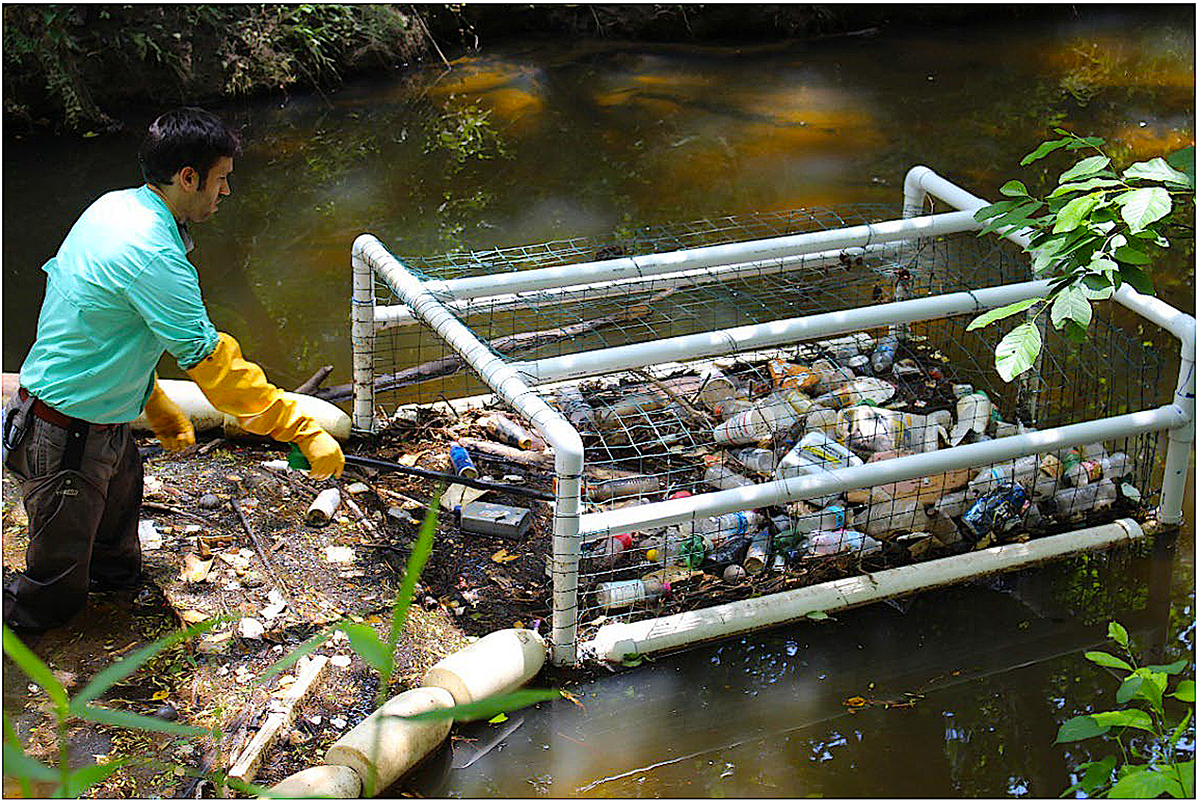 This monarch is tagged with a sticker from Monarch Watch, a conservation organization, to help report its migration. It is believed that the number of monarchs has plummeted nationwide. Photo: Sam Bland |
September in Eastern North Carolina is the beginning of one of Mother Nature’s great annual events: the fall migration of the monarch butterflies. All over the United States these lovely insects are on the move, with the eastern population heading to groves of fir trees in Mexico where they will congregate by the millions. They may travel up to 40 miles in a day.
In recent years, however, monarch populations have plummeted nationwide, and it is believed that their numbers have dropped from near a billion to less than 33 million. Orley “Chip” Taylor, a professor at the University of Kansas and the director of Monarch Watch, a monarch conservation organization, says that we may be on the brink of an immense ecological disaster.
Supporter Spotlight
Monarchs, he says, are a keystone species, symbolic of other wildlife that are endangered by the loss of habitat in this country. Seventy percent of all vegetation requires pollination, and there will be a biological cascade of effects if these species are destroyed. Butterflies and other pollinators are necessary to maintain the infrastructure of all wildlife, he said.
As a result of the monarch’s decline, leaders of the United States, Canada and Mexico discussed the wellbeing of monarchs at a one-day summit in February, agreeing to form a working group for the conservation of the species. They declared the monarch an “emblematic species which unites our three countries.”
Danaus plexippus, as the monarch is known to entomologists, belongs to the subfamily, Daninae, the milkweed butterflies. In their larval stage they feed entirely on various species of milkweed, wildflowers with a bitter, poisonous juice. Adult monarch butterflies continue to eat and store the noxious glycosides found in milkweed, making them distasteful to would-be predators.
 In the monarch’s caterpillar form, it munches on poisonous wildflowers called milkweed. Photo: Larry Lynch, National Wildlife Federation |
Monarch butterfly migrations have fascinated people for centuries. However, where the butterflies went in the winter was a mystery until the 1970s, when 60 million to a billion butterflies were discovered resting among the oyamel fir trees in central Mexico near Cerro Pelon. Much about their life history is still a mystery, and tagging projects across the country are trying to learn more.
It is believed that it takes four generations to complete an annual migration. Adult butterflies leave Mexico in the spring, and after mating, the females seek out milkweed plants to lay their eggs on. The first three generations travel north, each laying eggs on milkweed plants before dying at about six weeks old. The eggs hatch into smooth, ringed, black, green and yellow caterpillars, which feed on the milkweed and then spin bright green chrysalises, which pupate into butterflies, continuing the migration. The fourth generation forms a chrysalis later in the summer and may live up to eight months, completing the trip back to its wintering grounds.
Supporter Spotlight
On August 26, three organizations — the Center for Biological Diversity, the Center for Food Safety, and the Xerces Society — along with monarch researcher Lincoln Brower, petitioned the U.S. Fish and Wildlife Service to list the monarch butterfly as “threatened” on the federal Endangered Species List. This listing would make it illegal to purposefully kill a monarch butterfly or modify its habitat without a permit.
Part of the problem lies to the south, at the wintering grounds in Mexico. Matt Collington, the environmental education manager at Airlie Gardens in New Hanover County, says that while 70 acres at the wintering site are protected as a world heritage site, the butterflies are effected by the “edging effect.” Logging all around the site by farmers, cutting down rainforests, removes the buffer zone that protects it, leading to colder, harsher winters that the butterflies cannot survive.
Brower, a distinguished professor of zoology emeritus at the University of Florida and a research professor of biology at Sweet Briar College, has been studying butterflies since 1954. He has another theory. His research leads him to believe that the main cause of the decline lies to the north, where agricultural practices have practically wiped out the milkweed upon which monarchs rely.
Natural areas where milkweed grows have been plowed and planted with crops, mainly corn and soybeans. Most have been genetically altered to survive spraying with herbicides such as Roundup, while the milkweed is killed by such spraying.
 Orley “Chip” Taylor |
Taylor blames the chemical glyphosate, contained in the pesticide Roundup, as one of the main culprits. He explains that the production of biofuels in this country has led to a huge increase in the price of corn, resulting in the plowing of natural lands and wildflowers. From 2008 to 2012, he says, 24,000 acres of wildlife habitat — an area the size of Indiana — was plowed and converted to corn fields. As a result, President Obama distributed a memorandum on June 20, reasserting the necessity of conserving pollinators, including monarch butterflies.
Kathy Mitchell, who is in charge of the Monarch Project at the N.C. Aquarium in Manteo, adds that she thinks that the reason for monarch decline includes agricultural use of herbicides and homeowner use of pesticides, especially neonidcotoids — synthetic compounds derived from nicotine — and residential mosquito control programs, which have caused hive failures of bees as well.
The butterflies that migrate through eastern North Carolina usually arrive in May or June. Martha Flanagan, the coordinator of the Living Conservatory at the N.C. Museum of Natural Sciences in Raleigh, says that a small stable population of monarchs stays if resources are favorable and do not continue migrating. The fall migration usually peaks in October.
According to Taylor, many of the monarchs that migrate along the Outer Banks get caught up in tail winds from the ocean and die at sea. Those that make it may winter in Florida or head farther southwest.
Here, in North Carolina, not only corn fields but massive hog farms have displaced wild areas where such plants as milkweed, goldenrod and other butterfly food sources used to grow. Mitchell remembers seasons when monarch caterpillars were so thick on the milkweed plants in the Manteo aquarium’s wildflower gardens that they were breaking the stalks. She says she did not see any monarchs this spring, however, and that few have been spotted in Currituck, Edenton or southern Virginia. She remarked that 2013 had the lowest numbers of monarchs in years, and that there have been fewer butterflies in general.
Harry LeGrand, author of Butterflies of North Carolina, says that, “2014 is by far the poorest year for butterflies (including monarchs) that I have witnessed since I began butterflying in 1991.”
He attributes this to unusual weather patterns and extremely cold winter temperatures but acknowledges that only time will tell. LeGrand thinks that the main cause of nationwide monarch losses is the logging of firs in Mexico and that practices leading to milkweed loss are, in comparison, “tiny drops in the bucket.”
On the positive side, says Collington, there is great interest among homeowners who are anxious to help out butterflies by planting milkweed and other native species in their yards.
“Conservation and restoration of milkweed needs to be a top priority,” says Taylor.
The Natural Resource Defense Council is asking state and county highway departments to plant milkweed and refrain from mowing and using herbicides. At the North American Leaders’ Summit in February, one of the commitments was to create a “milkweed corridor” from Canada to Mexico.
What You Do to Help?
People can refrain from using chemical herbicides in their yards and gardens, allow native plants such as milkweed and goldenrod to grow, plant the host and nectar plants needed by monarchs in yards, schools, parks and roadsides, and encourage others to do the same.
According to Melanie Doyle, conservative horticulturist at the Fort Fisher Aquarium, there are 20 species of milkweed native to North Carolina. Monarchs migrate through the Outer Banks from September through November; and according to Doyle, they do lay eggs on the milkweed plants and these eggs do hatch. They also feed on the nectar of seaside goldenrod, narrowleaf or swamp milkweed, sunflowers, wild asters, black-eyed Susans, coneflowers and a host of other flowers.
The N.C. Aquarium’s monarch conservation plant sale offers three species of native milkweed, and the N.C. Coastal Federation’s native plant sale sells several nectar plants. Milkweed seeds can be obtained online from the organization Monarch Watch, as well as at other sites.Brower emphasizes that it is not too late to save the monarchs but that action must be taken now “while there is still time!”







